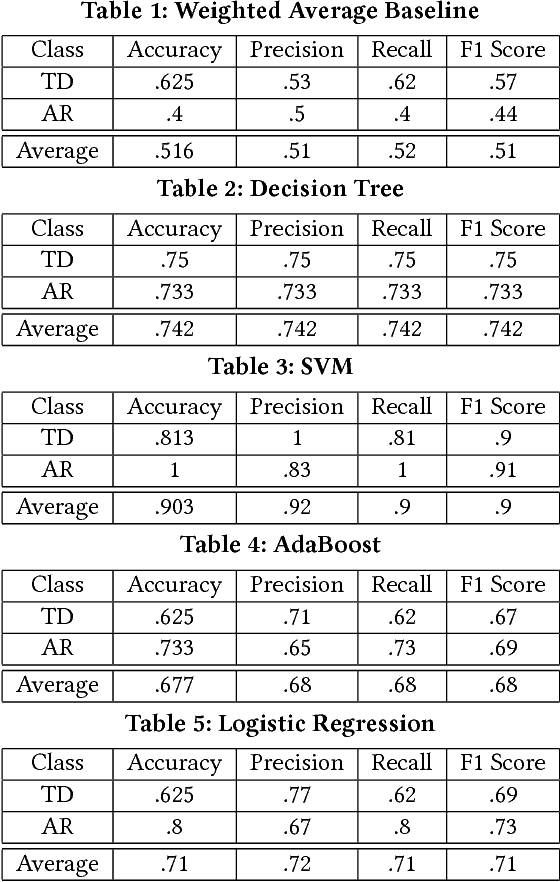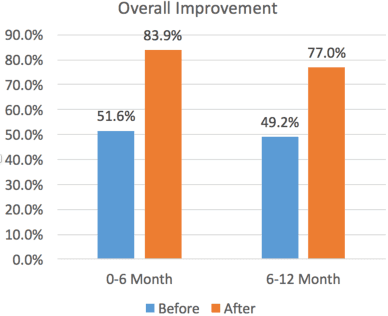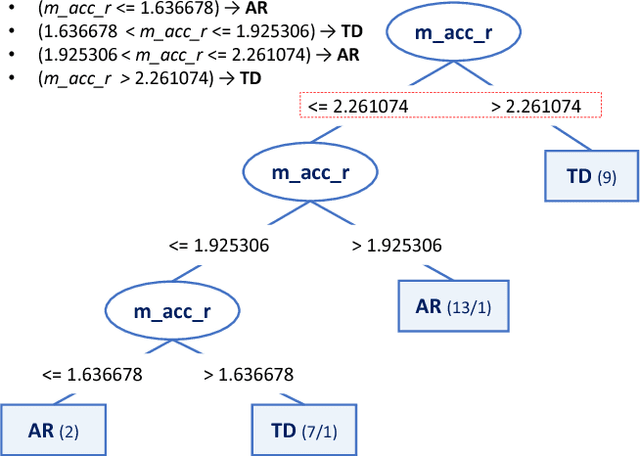Jose Carlos Pulido
Predicting Infant Motor Development Status using Day Long Movement Data from Wearable Sensors
Oct 14, 2018



Abstract:Infants with a variety of complications at or before birth are classified as being at risk for developmental delays (AR). As they grow older, they are followed by healthcare providers in an effort to discern whether they are on a typical or impaired developmental trajectory. Often, it is difficult to make an accurate determination early in infancy as infants with typical development (TD) display high variability in their developmental trajectories both in content and timing. Studies have shown that spontaneous movements have the potential to differentiate typical and atypical trajectories early in life using sensors and kinematic analysis systems. In this study, machine learning classification algorithms are used to take inertial movement from wearable sensors placed on an infant for a day and predict if the infant is AR or TD, thus further establishing the connection between early spontaneous movement and developmental trajectory.
 Add to Chrome
Add to Chrome Add to Firefox
Add to Firefox Add to Edge
Add to Edge